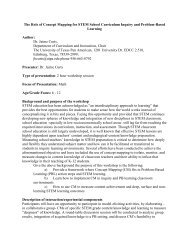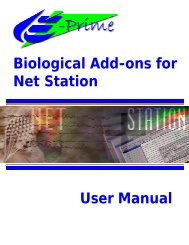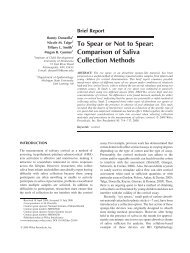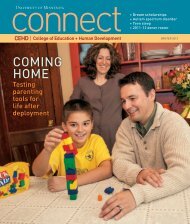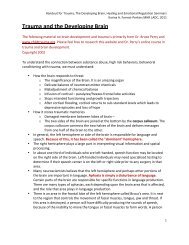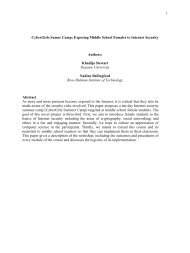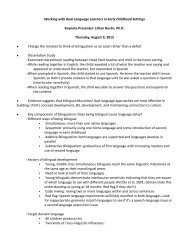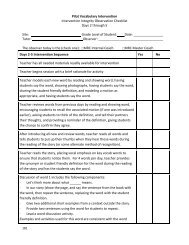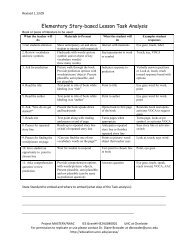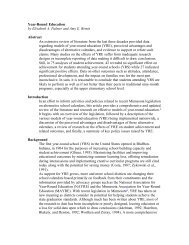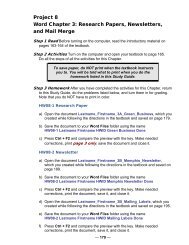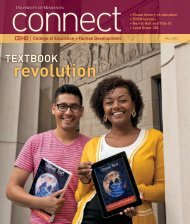Introduction to Positive Ways of Intervening with Challenging Behavior
Introduction to Positive Ways of Intervening with Challenging Behavior
Introduction to Positive Ways of Intervening with Challenging Behavior
Create successful ePaper yourself
Turn your PDF publications into a flip-book with our unique Google optimized e-Paper software.
work which they may not see or may be hesitant <strong>to</strong> verbalize. This activity helps students <strong>to</strong> take more ownership<br />
and develop more <strong>of</strong> a sense <strong>of</strong> responsibility in their work.<br />
Questions <strong>to</strong> ask in evaluating your classroom environment and student rapport...<br />
Rogers (1990, p. 158) lists the following questions <strong>to</strong> ask yourself in evaluating the climate <strong>of</strong> your classroom:<br />
• Do I speak hastily, calmly, clearly? Do I nag? How would my students describe me most <strong>of</strong> the time?<br />
• Do I have clear rules and procedures that are known and reinforced?<br />
• Am I aware <strong>of</strong> what my students are doing? Do I encourage them, listen <strong>to</strong> them, notice their positive<br />
cooperative behaviors as well as their <strong>of</strong>f-task, disruptive behaviors?<br />
• Do I plan <strong>to</strong> cater for mixed abilities <strong>with</strong> variety in my approach?<br />
• Do I ever use small groups or cooperative learning? (See tip sheet entitled "Cooperative Learning.")<br />
• How positive is my discipline? Do I proactively plan ahead for disruptions?<br />
• Do I respect students even if I dislike them? Am I consistent in my discipline?<br />
• Do I follow up on disruptive students?<br />
Creating a positive classroom environment and positive rapport <strong>with</strong> your students is a cooperative endeavor. It<br />
requires evaluation and modification <strong>of</strong> both student and teacher behavior. Committing <strong>to</strong> it at the beginning <strong>of</strong><br />
the school year will pay <strong>of</strong>f greatly in the long run.<br />
References<br />
Jones, V., & Jones, L.S. (1986). Comprehensive classroom management: Creating positive learning environments. (2nd Ed.). Bos<strong>to</strong>n:<br />
Allyn and Bacon.<br />
Brookover, W., Beamer, L., et al. (1982). Creating effective schools: An in-service program for enhancing school learning climate and<br />
achievement. Holmes Beach. FL: Learning Publications, Inc.<br />
Emmer, E.T., et al. (1994). Classroom management for secondary teachers (3rd ed.). Needham Heights, MA: Allyn and Bacon.<br />
This publication was supported by Grant #H029K20171, Special Project <strong>to</strong> Provide Technical Assistance, Inservice Training<br />
and Site Development for <strong>Positive</strong> <strong>Behavior</strong>al Support Strategies for Students <strong>with</strong> Disabilities from the U.S. Department <strong>of</strong><br />
Education. The University <strong>of</strong> Minnesota is an equal opportunity employer and educa<strong>to</strong>r.




